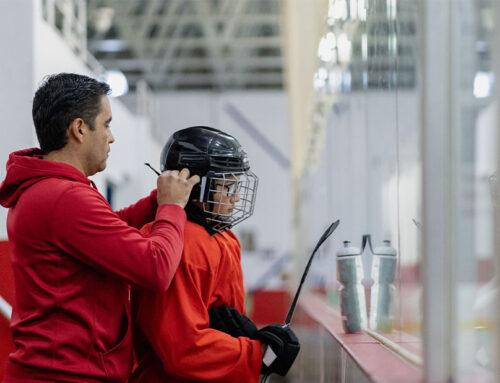5 Outfield Drills for Youth Baseball
Little League coaches seem perpetually on the hunt for simple but solid outfield drills for youth baseball players. That’s why I put together this list of drills that I often recommend.
But before we get to the nitty gritty, a few guidelines:
- It’s best to include all of your players, infielders and outfielders, in these drills, since some infielders may end up playing the outfield sooner or later.
- You can do all five drills inside a training facility or outside on a field.
- Encourage all your players to take a direct path to ground balls and fly balls. Angle on the ball is vital to taking a shorter path.
- A player’s first step can be the difference between making or missing a catch. Players should take their first step with the foot closest to the ball. Instruct them that every time a ball is hit, take two steps in the direction of the ball—even a foul ball into the parking lot.
1. Ground Ball Drills, no runner on base
The coach rolls or hits a ball to the outfielder. The outfielder gets into an “infielder” position to field the ball. The player stays in this position to field the ball out front. After fielding the ball, the player steps with his throwing foot forward, then his glove foot, to get into throwing position. Encourage players to stay upright when fielding ground balls, because of the potential for a “bad hop” on the field.
RELATED: How to Build Arm Strength for Baseball: Throwing Drills
2. Ground Ball Drills, runner(s) on base
The coach rolls or hits a ball to the outfielder. The outfielder continues to move through the ball, fielding it in front or just inside his glove foot, while maintaining momentum to make a strong throw to the cutoff man. Coaches should encourage working on this technique until the player is comfortable fielding the ball on the move.
3. Throwing to the Cutoff Man
Do this drill with the above techniques; perform #1, then #2. If you’re indoors, allow the outfielders to throw into a net. Tape or use a string to set a target on the net. If you’re outside, have the outfielder throw 100 to 130 feet.
RELATED: 5 Little League Baseball Drills to Teach Fielding and Throwing
4. Catching Fly Balls
This is one of the most difficult outfield drills for youth baseball players. Some youngsters are afraid of the ball; therefore, we start this drill with a tennis ball. While preparing to catch the ball, the outfielder should say “mine” or “I got it” to alert everyone.
Key to this drill is for the outfielder to gain confidence. We allow younger outfielders to kneel and have a coach toss a ball directly to them. After that step, the outfielder learns how to stand and catch the ball over his glove shoulder, to ensure that he sees the ball all the way into his glove. When that task is conquered, he learns to catch the ball over his throwing shoulder to allow for a quicker catch-to-release time when a runner is tagging up and trying to advance.
RELATED: Agility Drills to Improve Baseball Fielding
5. Backing up Bases
This outfield drill is not much fun for youth baseball players, but it can save a game when done correctly. From little league to the big leagues, players make bad throws and need a teammate to back up the throw.
When a ground ball is hit to the second baseman, shortstop or third baseman, the right fielder should sprint to back up the throw to first base. The left fielder and center fielder need to back up the infielder who is making the play on the ball.
When an opponent bunts, outfielders should sprint in to back up the base in front of them, because at that point the infielder has not thrown the ball.
RECOMMENDED FOR YOU
5 Outfield Drills for Youth Baseball
Little League coaches seem perpetually on the hunt for simple but solid outfield drills for youth baseball players. That’s why I put together this list of drills that I often recommend.
But before we get to the nitty gritty, a few guidelines:
- It’s best to include all of your players, infielders and outfielders, in these drills, since some infielders may end up playing the outfield sooner or later.
- You can do all five drills inside a training facility or outside on a field.
- Encourage all your players to take a direct path to ground balls and fly balls. Angle on the ball is vital to taking a shorter path.
- A player’s first step can be the difference between making or missing a catch. Players should take their first step with the foot closest to the ball. Instruct them that every time a ball is hit, take two steps in the direction of the ball—even a foul ball into the parking lot.
1. Ground Ball Drills, no runner on base
The coach rolls or hits a ball to the outfielder. The outfielder gets into an “infielder” position to field the ball. The player stays in this position to field the ball out front. After fielding the ball, the player steps with his throwing foot forward, then his glove foot, to get into throwing position. Encourage players to stay upright when fielding ground balls, because of the potential for a “bad hop” on the field.
RELATED: How to Build Arm Strength for Baseball: Throwing Drills
2. Ground Ball Drills, runner(s) on base
The coach rolls or hits a ball to the outfielder. The outfielder continues to move through the ball, fielding it in front or just inside his glove foot, while maintaining momentum to make a strong throw to the cutoff man. Coaches should encourage working on this technique until the player is comfortable fielding the ball on the move.
3. Throwing to the Cutoff Man
Do this drill with the above techniques; perform #1, then #2. If you’re indoors, allow the outfielders to throw into a net. Tape or use a string to set a target on the net. If you’re outside, have the outfielder throw 100 to 130 feet.
RELATED: 5 Little League Baseball Drills to Teach Fielding and Throwing
4. Catching Fly Balls
This is one of the most difficult outfield drills for youth baseball players. Some youngsters are afraid of the ball; therefore, we start this drill with a tennis ball. While preparing to catch the ball, the outfielder should say “mine” or “I got it” to alert everyone.
Key to this drill is for the outfielder to gain confidence. We allow younger outfielders to kneel and have a coach toss a ball directly to them. After that step, the outfielder learns how to stand and catch the ball over his glove shoulder, to ensure that he sees the ball all the way into his glove. When that task is conquered, he learns to catch the ball over his throwing shoulder to allow for a quicker catch-to-release time when a runner is tagging up and trying to advance.
RELATED: Agility Drills to Improve Baseball Fielding
5. Backing up Bases
This outfield drill is not much fun for youth baseball players, but it can save a game when done correctly. From little league to the big leagues, players make bad throws and need a teammate to back up the throw.
When a ground ball is hit to the second baseman, shortstop or third baseman, the right fielder should sprint to back up the throw to first base. The left fielder and center fielder need to back up the infielder who is making the play on the ball.
When an opponent bunts, outfielders should sprint in to back up the base in front of them, because at that point the infielder has not thrown the ball.










